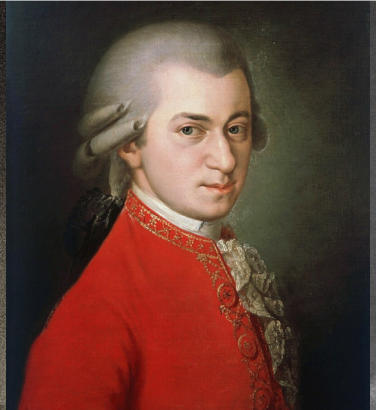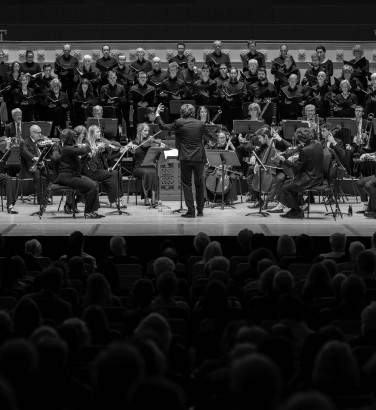
Joseph Joachim and the great German violin concertos
15 Jul 2024
News Story
From left to right: Joseph Joachim in 1853, c. 1870 and in later life
The Germans have four violin concertos. The greatest, most uncompromising is Beethoven's. The one by Brahms vies with it in seriousness. The richest, the most seductive, was written by Max Bruch. But the most inward, the heart's jewel, is Mendelssohn’s.
These words were spoken by the great Hungarian violinist Joseph Joachim (1831-1907) as he celebrated his 75th birthday in 1906. Save for Brahms’ concerto (which the SCO performs with Nicola Benedetti in the 2024/25 Season Finale, 14-16 May) having perhaps eclipsed Beethoven’s in popularity since (maybe as a result of the latter’s uncompromising nature), it’s a sentiment which has largely stood the test of time. Bruch’s – it’s taken as read this is his Violin Concerto No 1 in G minor, by far the best-known of the three he wrote – has a late-Romantic atmosphere all of its own, contrasting with the unparalleled lyricism of Mendelssohn’s. (Again, this has to refer to the E minor concerto, performed by the SCO in July 2024; his earlier one in D minor had been all but forgotten until Yehudi Menuhin rediscovered it in 1951.)
Few would question the validity of Joachim’s opinions: he was among the foremost violinists of the 19th century, having fostered close working relationships with many of the greatest composers of the period. Only Niccolò Paganini might be said to outrank him, but the Italian is perhaps best remembered as a showman, for all the enormous strides he made in pushing violin-playing technique. If nothing else, Joachim gave the premiere of Brahms’ violin concerto, conducted by the composer himself – as trump cards go, it's one which would take some beating.
Brahms’ being the last of these four concertos to have been written, it's worth looking back over Joachim’s career, and more particularly his experience of playing these cornerstones of the violinist’s repertoire. Beethoven’s (the only one to have been written before Joachim was born) had actually fallen into obscurity in the years after its 1806 premiere: strange though it might seem, it had not been a success. A number of reasons have been put forward for this, among them the belief that the soloist (Franz Clement, a leading violinist in early 19th-century Vienna) had had to sightread a good deal of his part in that first performance, and it has to be said that the sheer length of the first movement may have proved quite a challenge to the audience – it lasts more than 20 minutes, slightly over half the duration of the concerto as a whole.
This may well be at the root of Joachim’s claim that Beethoven’s concerto is so uncompromising. As the person to have revived it in 1844, he was certainly in a good position to appreciate this particular aspect of the music. That said, given that Joachim was only 12 at the time, it speaks volumes for his maturity as a musician that he was able to reintroduce this piece into the repertoire, where it has remained a mainstay ever since.
Coincidentally, the conductor at this historic performance was none other than Felix Mendelssohn, the composer of the next of these great violin concertos. Not that this ‘heart’s jewel’, to use Joachim’s phrase, was inspired by Beethoven’s, as Mendelssohn had already referred to the music (“the beginning of which gives me no peace”) in a letter six years prior. It was eventually premiered in 1845, and Joachim added it to his own repertoire – in what was only its third performance, conducted by Robert Schumann – later that same year, thus playing an important role in its enduring popularity. Just over another century later, in 1948, Nathan Milstein’s interpretation of the concerto (under Bruno Walter) was the inaugural release on the newly launched medium of the LP.
Joachim had become an important figure by the time the first of Bruch’s violin concertos was premiered in 1866. His role here was different again: he gave only the second performance of the work, two years later, after Bruch had withdrawn the work and revised it extensively. This was the result of what would now be termed a period of consultation, during which he sought Joachim’s advice (among others). Bruch didn’t take all of his suggestions on board, but dedicated this second (and final) version of the work to Joachim in recognition of this assistance.
While Joachim’s relationships with Mendelssohn and Bruch come across as cordial but professional, he and Brahms enjoyed the warmest of friendships. They met through Robert and Clara Schumann, a close bond forming between the four which outlasted Robert Schumann’s death in 1856. (The three went on to suppress Schumann’s Violin Concerto, a late work Joachim was convinced was the product of the composer’s failing mental health towards the end of his life.) Brahms had always appreciated Joachim’s thoughts on his latest compositions, so it is no surprise that he particularly valued his friend’s input when writing his violin concerto in 1878.
Even then, this wasn't an instant success either. Most notably, the Spanish violinist Pablo de Sarasate was so incensed at the oboe (as he saw it) stealing the limelight in the slow movement that he refused to play the concerto: a case of cutting off your nose to spite your face if there ever was one. Even Joachim seemed less enthusiastic than one might have expected, the result of Brahms having supported his wife when their marriage fell apart. The friends remained distant until 1887, when Brahms extended an olive branch in the form of his Double Concerto (for violin and cello).
If Joachim is principally remembered for his championing of this repertoire, his influence of course extended far beyond. He and Sarasate share the majority of dedications of the Romantic period’s major violin concertos between them, and his students included Jenő Hubay (who went on teach Joseph Szigeti and Sándor Végh) and Leopold Auer, whose own pupil Oscar Shumsky recorded Mozart and Bach with the SCO in the 1980s. There is also a further minor connection to Scotland in Joachim's friendship with the musicologist Donald Tovey, who taught at the University of Edinburgh from 1914 until his death in 1940.
Related Stories
![Three men, the first two in 18th century formal dress (one in black and white, one in a red coat), the last in an old photo, smoking]()
What is a sinfonia concertante?
17 March 2025
We delve into the history of a hybrid genre ...![]()
The SCO Chorus on music for Lent
10 March 2025
With Easter just around the corner, we delve into perhaps the richest (and often darkest) choral repertoire of all ...![]()
The bassoon concerto
3 March 2025
For the last article in our concerto series (for now), we turn to an instrument too often dismissed as the orchestra's resident joker.


